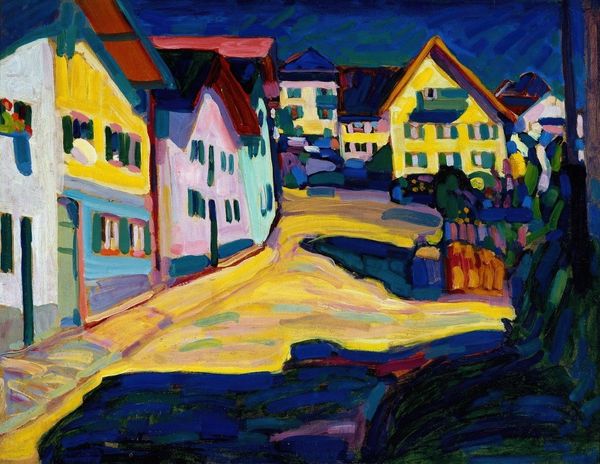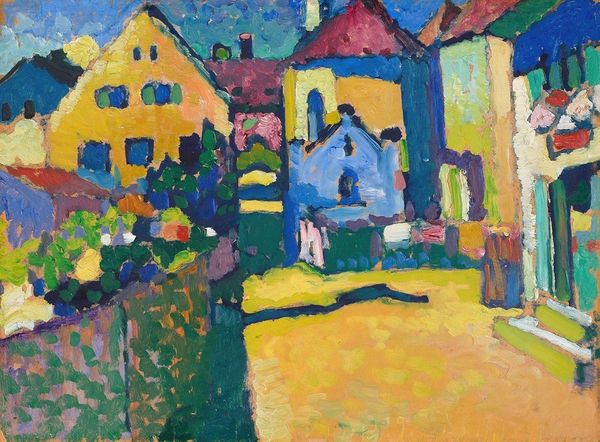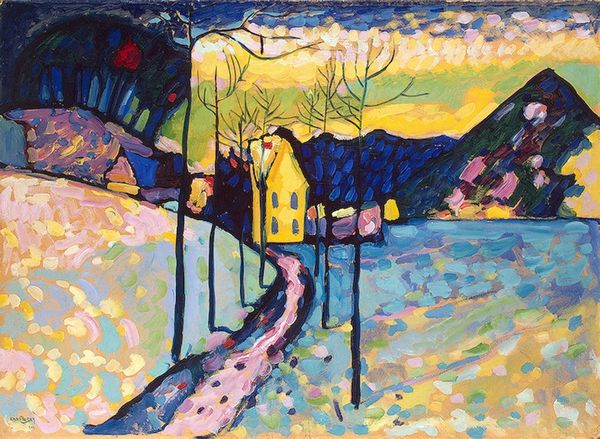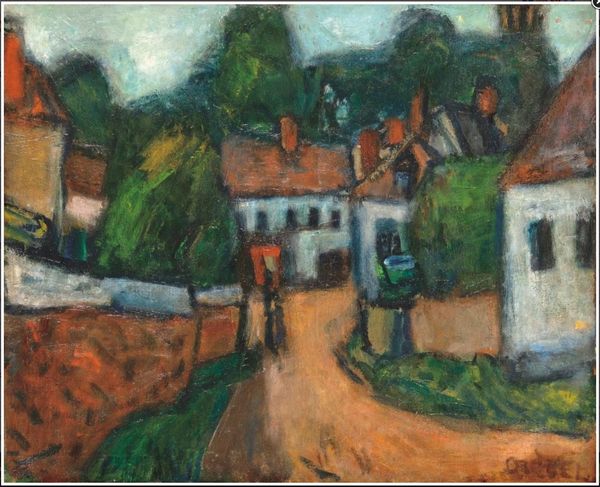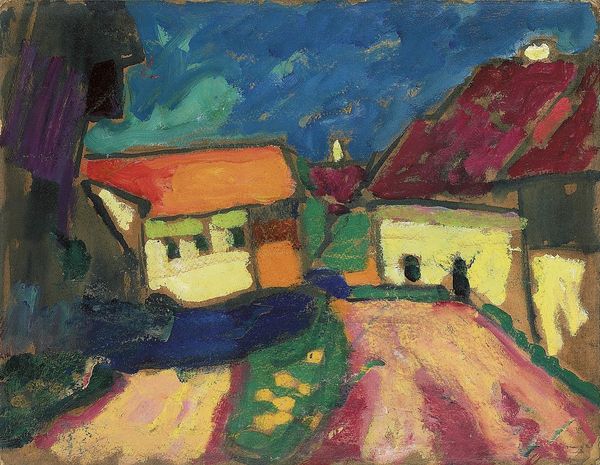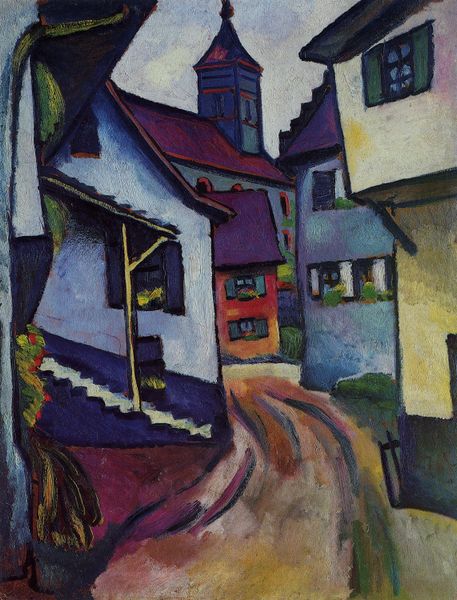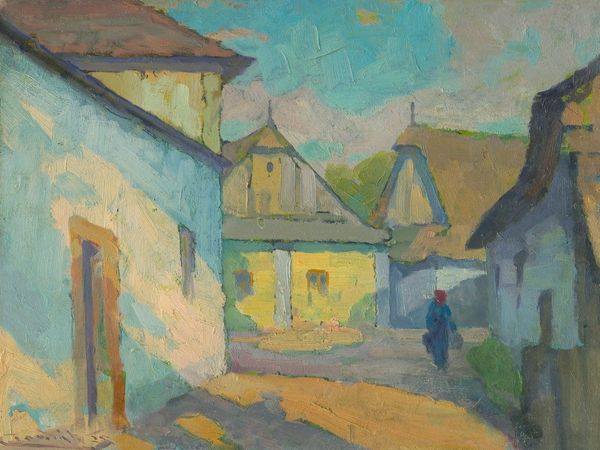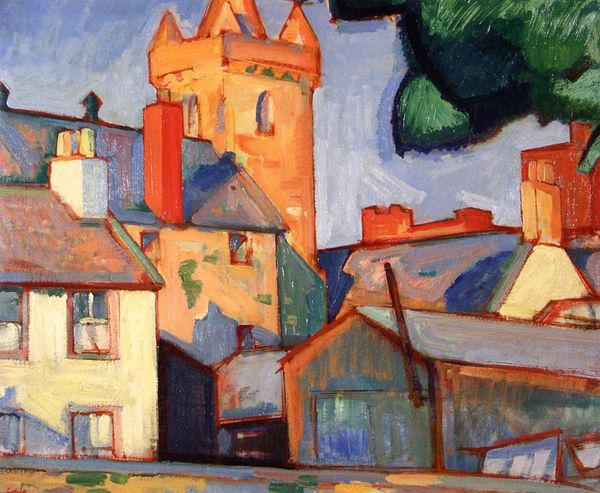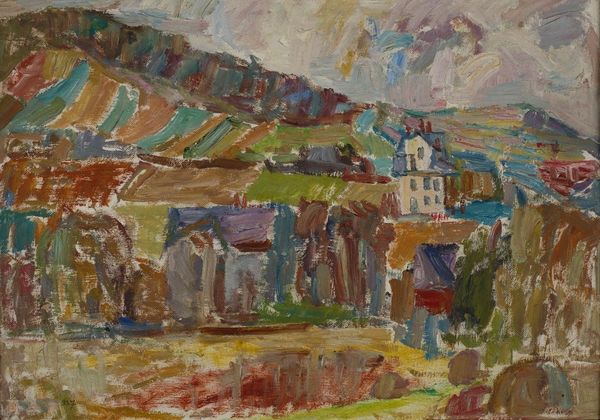
painting, oil-paint
#
fauvism
#
fauvism
#
painting
#
oil-paint
#
landscape
#
impressionist landscape
#
geometric
#
expressionism
#
cityscape
#
expressionist
Copyright: Public Domain: Artvee
Curator: Looking at Wassily Kandinsky's "Murnau – View from the window of the Griesbräu" from 1908, I'm immediately struck by the non-naturalistic use of color. It feels… almost aggressively joyful. Editor: Indeed, it vibrates with an energetic, raw quality! The bold color certainly arrests one’s attention but it leads my mind straight to the materials used. Oil paint offers this vibrancy and allows for a manipulation which translates to expression and freedom. Curator: Yes, the very facture emphasizes process, as you suggest. He abandons any pretense of mimetic representation in favor of something far more…affective. Note how the lines themselves become expressive, independent of their descriptive function. The geometric shapes imply form, yet everything verges on abstraction. Editor: Agreed! Look closer and consider not just the pigment, but also the texture he’s achieved, and what this implicates in the practice. His mark-making becomes almost sculptural! Each brushstroke indicates Kandinsky’s engagement with this scene in Murnau. These colors are chosen but the act of application becomes crucial to our understanding of how this artist feels about this view. Curator: The high vantage point is crucial. It gives a sense of detachment, almost as if he's observing this village and landscape through a filter of pure sensation, distilling its essence into a symphony of color and form. He transforms a somewhat ordinary cityscape into something that resonates with deeper psychological and emotional truths. Editor: I keep considering how that affects what the artwork communicated to audiences and artists too, particularly locally! Think of how others may engage in town, by depicting this or other scenes in Murnau using different approaches or even varying medium – sculpture or weaving! These types of visual expressions around shared settings construct an interconnected creative conversation between humans! Curator: It does provide an opening doesn't it! Kandinsky offers a very distinct articulation within these dialogues through its innovative construction. I would venture to say, this allows for viewers to engage intimately within the structural elements to unearth their deeper resonance with it. Editor: Precisely, we see a convergence where formal elements are completely entwined in a tangible action! This pushes art's boundaries beyond aesthetics and deeply connects art, labor, materials and perception into an intersubjective field. Curator: This is more than a view; it's a felt experience, rendered visible. Editor: Precisely; each pigment application feels like a piece of dialogue. The oil becomes the crucial means to translating thoughts to the canvas, connecting artist, artwork, and witness.
Comments
No comments
Be the first to comment and join the conversation on the ultimate creative platform.
